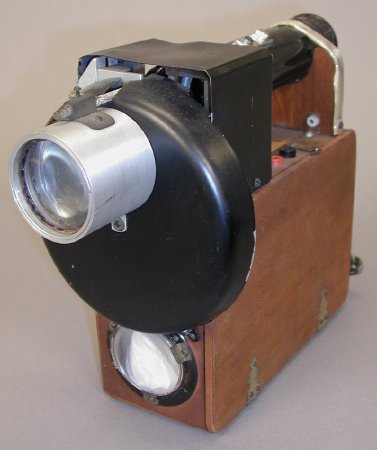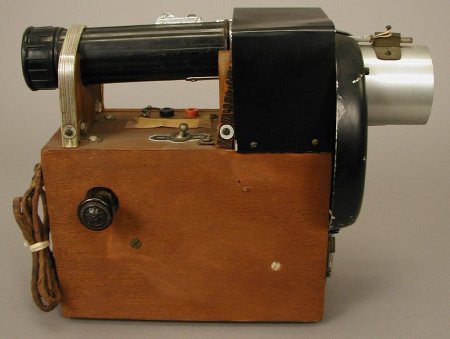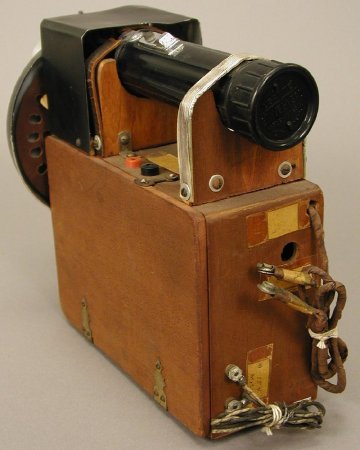Object ID:
2007.33.9
Title:
"Flashlight" Obstacle Detector
Creator:
Biophysical Instruments
Description:
Prototype constructed from wooden cigar box placed on its side, "USA LITE SWIVEL HEAD" flashlite body strapped to wooden cradle on top with leather bands to form handle; aluminum basin bottom, enameled black, screwed to front, bright aluminum lens housing emerges from top of basin; black aluminum sheet wrapped around top of cigar box between the basin and the flashlight handle; beneath the basin piece is a second lens; cigar box case has hinged lid on left proper, secured by brass latch; on/off toggle and red/black headphone jacks on top of case under handle; back of case has pair of wrapped wires with 9v transistor battery terminals, and a second set of black/white wires attached to screw terminals; Bakelite rotary adjustment knob on right side of case (proper); internal workings feature set of three mirrors behind the lower lens, a "C" battery box and machined aluminum hardware; various components labeled with handwritten paper tags under cellophane tape.
Dimensions:
H-9 W-5.5 D-11.5 inches
Date:
ca. 1955
Made by:
Biophysical Instruments, Inc.; Benham, Thomas A.; Benjamin, J. Malvern
Place of Origin:
Haverford, PA
Provenance:
Blind since boyhood, Thomas A. Benham earned his doctorate in electrical engineering from Penn and taught physics and math at Haverford College until he retired in 1976. In 1950, he began working under contract with the Veterans Administration to evaluate the Signal Corps Obstacle Detector. In 1953, Haverford subcontracted further investigations to Biophyscal, Instruments, Inc., whose lead investigator, Malvern Benjamin, worked with Benham to develop three different protype obstacle detectors based upon the same principles as the Signal Corps model, the G-4, G-5, and Flashlight Obstacle Detectors. All three used reflected light to detect obstacles/objects in the direction ahead of the user. The "Flashlight Detector" never made it beyond the prototype phase, but featured an early gallium arsenide light-emitting diode that would prove useful to Benjamin later during his work on the first laser canes, with their true GaAs room-temperature lasers. The Flashlight Detector had a range of about 6', but proved impractical as a general purpose device.
Credit Line:
Gift of Association for Education and Rehabilitation of the Blind and Visually Impaired


